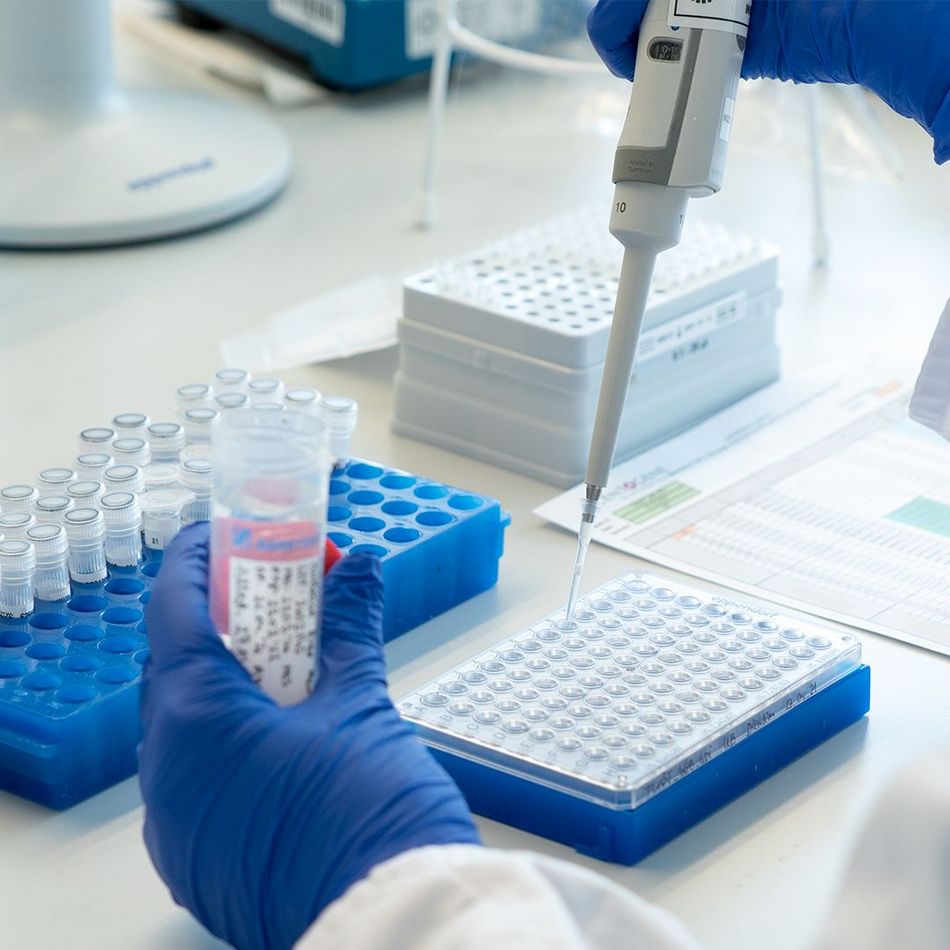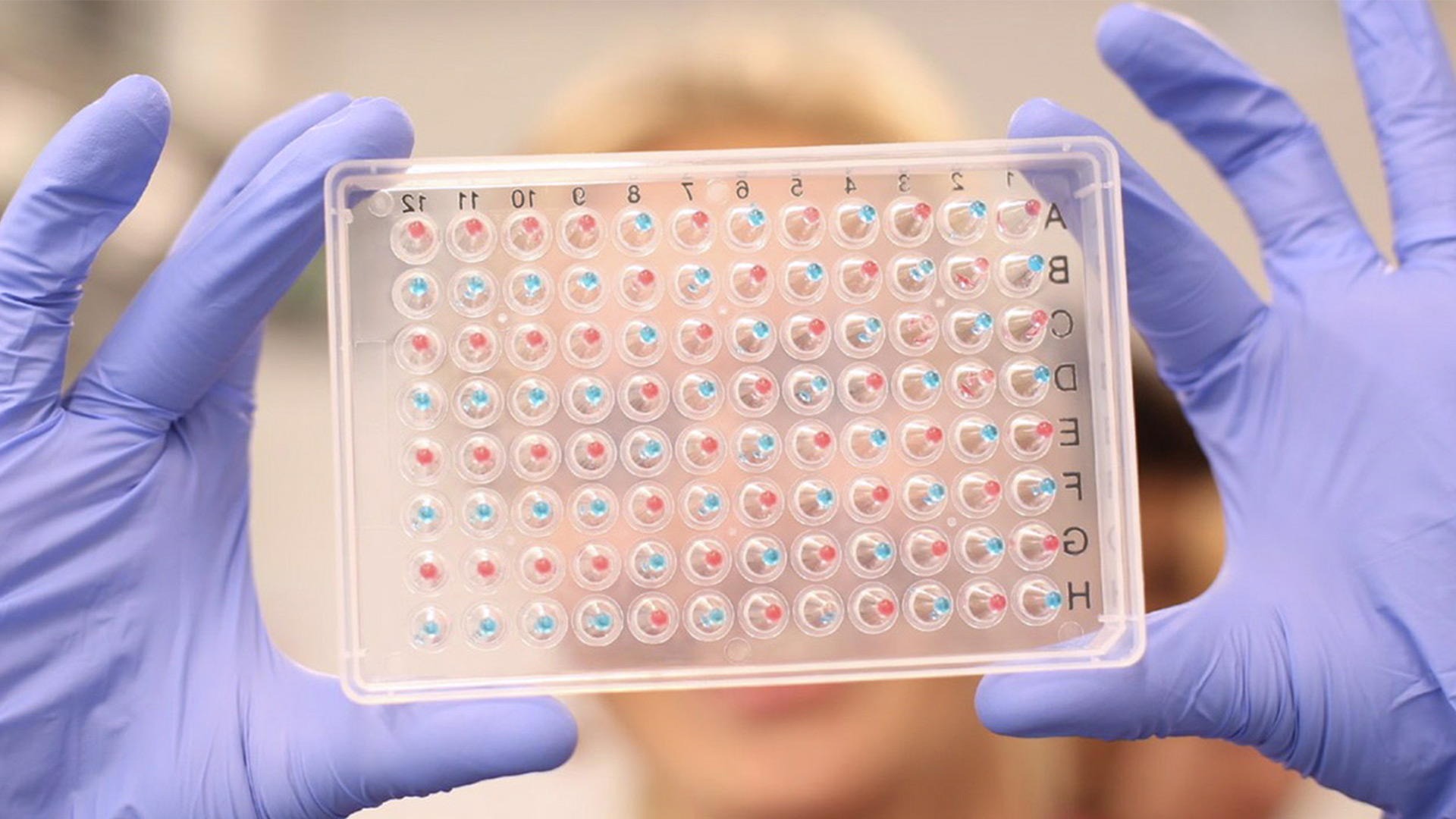Medical Reporting at CENTOGENE
Your trusted partner for first-class medical interpretation and comprehensive reporting validated by our experienced medical experts
Quality of Medical Reports
High-quality medical reporting is the key to building a trusted partnership.
At CENTOGENE, we place our patients first, which is reflected in our patient-centric medical reports. Throughout the entire process, there are quality controls to ensure the best quality data analysis and interpretation.
The clinical integration and interpretation at the level of genotype-phenotype analysis are crafted in a short summary in the Interpretation section and Pictogram to help the clinician quickly understand the outcome of the test. The variant classification workflow is performed by our expert clinical scientists through intensive and comprehensive processes, as recommended by ACMG and ClinGen. The CENTOGENE Biodatabank, which currently contains nearly 700,000 patients representing over 120 highly diverse countries, more than 70% of whom are of non-European descent including a large share of pediatric cases, greatly supports the classification process. Variant and disease descriptions and tailored recommendations further help clinicians with the diagnosis and guidance of patients and their families. For each assay, a transparent and detailed description of methods and limitations are provided.
What Are the Basics in Our Analysis, Interpretation, and Reporting?
- Comprehensive evaluation of patients' clinical information and family history
- Detailed quality control of the data prior to analyzing
- Careful and extensive genotype-phenotype analysis
- Clinical integration and interpretation of relevant findings
- State-of-the-art variant classification following best-practice guidelines ACMG and ClinGen
- Full variant and disease desriptions for reported variant and disease
- Reference to latest research findings and publications
- Recommendations for follow-up or further analyses tailored to the findings of the report
- Clear and comprehensive clinical reports designed to support clinical management
Variant Classification
At CENTOGENE, we consider variant classification as a key step in diagnosing patients with genetic disorders. Since the original publication by the ACMG in 2015 on variant classification guidelines, the process has been expanded and developed further by ClinGen. CENTOGENE has been a pioneer at implementing these latest guidelines and recommendations into our medical reporting process - including both Single Nucleotide Variants (SNVs) and Copy Number Variants (CNVs) variant classifications. To maximize variant classification, we also leverage and integrate insights from the CENTOGENE Biodatabank, our proprietary mutation database with detailed clinical information, frequency, and geographic origin.
Since 2006, we have been delivering life-changing answers alongside our network of approximately 30,000 active physicians worldwide. Our ISO, CAP, and CLIA certified multiomic reference laboratories in Germany utilize Phenomic, Genomic, Transcriptomic, Epigenomic, Proteomic, and Metabolomic datasets. This data is then captured in the CENTOGENE Biodatabank.
By systematically reevaluating newly identified variants, we proactively communicate all new classifications free of charge as our life-long commitment to rare and neurodegenerative patients around the world.
Next Generation Sequencing (NGS) Panels
For all Next Generation Sequencing (NGS) panels, identified variants are classified according to our standardized system. Classes 1–5 are assigned based on publicly available databases ( HGMD, LOVD, UMD, etc.) as well as the CENTOGENE Biodatabank, according to a standard protocol. We cross-check sequence results with all available databases for previously reported variants. If the variant has not been reported to date, classification relies on data about the nature and frequency of the variant, in silico predictions, and all available information regarding the zygosity and segregation of the identified variant in the patient’s family.
Reporting of Identified Variants
In the final step, all identified variants along with their annotations are evaluated for potential relevance to the patient's clinical symptoms and/or suspected diagnosis.
Whole Exome Sequencing (WES) and Whole Genome Sequencing (WGS)
Whole Exome Sequencing (WES) analyzes the protein-coding region of the human genome (exome; ~1%). Included are genes without any known association with human disease. We classify identified variants using the above-mentioned workflow, including all available information in public databases, such as Online Mendelian Inheritance in Man (OMIM) and HGMD®, gene specific databases, publications (PubMed), and genotype-phenotype databases, such as the CENTOGENE Biodatabank.
Based on standard guidelines and the diagnostic setting, only variants detected in genes that are well-defined in causing human diseases are reported. From these, all relevant variants related to the phenotype of the patient are included in the report. Pathogenicity of the variant(s) is discussed in light of the clinical information provided. Taking into account the clinical picture of the patient and family history of the disorder, further diagnostic steps are recommended. Disease-associated polymorphisms with well-established clinical significance for the individual disease phenotype(s) are also reported.
Whole Genome Sequencing (WGS) is the most comprehensive method for analyzing the genome. Enrichment artifacts and coverage issues are not a problem. WGS enables the analysis of analysis of SNVs, CNVs, Insertion-Deletion Variants (INDELs), and Structural Variants (SVs) of both ( ~1% of protein coding regions) and of the remaining ~99% of non-coding sequences. The reporting procedure for WGS analysis is similar to WES.
Dual Genetic Diagnosis Is Possible With WES and WGS
In some cases, two pathogenic or likely pathogenic genetic variants are associated with either non-overlapping clinical presentations or contribute to a single major phenotype. In such cases, it is sometimes necessary to discuss the case (before reporting) with the ordering clinician.
Secondary (Incidental) Findings
If requested by the clinician, we also provide information on gene variants not associated with the patient’s disease or symptoms, but that are medically actionable (Incidental or Secondary Findings). In such cases, we report the gene variants along with any available potential treatment information (Incidental or Secondary Findings). We report variants in 73 selected genes according to ACMG1,2 guidelines.
Benefits WES & WGS
- WGS is the most comprehensive method to analyze the entire genome
- WES is an analysis of the protein-coding region of the human genome only (exome; ~1%)
Reference
-
Miller, D.T., Lee, K., Gordon, A.S. et al. Recommendations for reporting of secondary findings in clinical exome and genome sequencing, 2021 update: a policy statement of the American College of Medical Genetics and Genomics (ACMG). Genet Med (2021). doi.org/10.1038/s41436-021-01171-4
-
Miller, D.T., Lee, K., Chung, W.K. et al. ACMG SF v3.0 list for reporting of secondary findings in clinical exome and genome sequencing: a policy statement of the American College of Medical Genetics and Genomics (ACMG). Genet Med (2021). doi.org/10.1038/s41436-021-01172-3
Get in Touch With Our Customer Support
Our consultation service is available in several languages.
+49 (0) 381 80 113 - 416
Mon. – Fri. 7 a.m. – 6:30 p.m. CET
Sat. 8 a.m. – 12 p.m. CET

